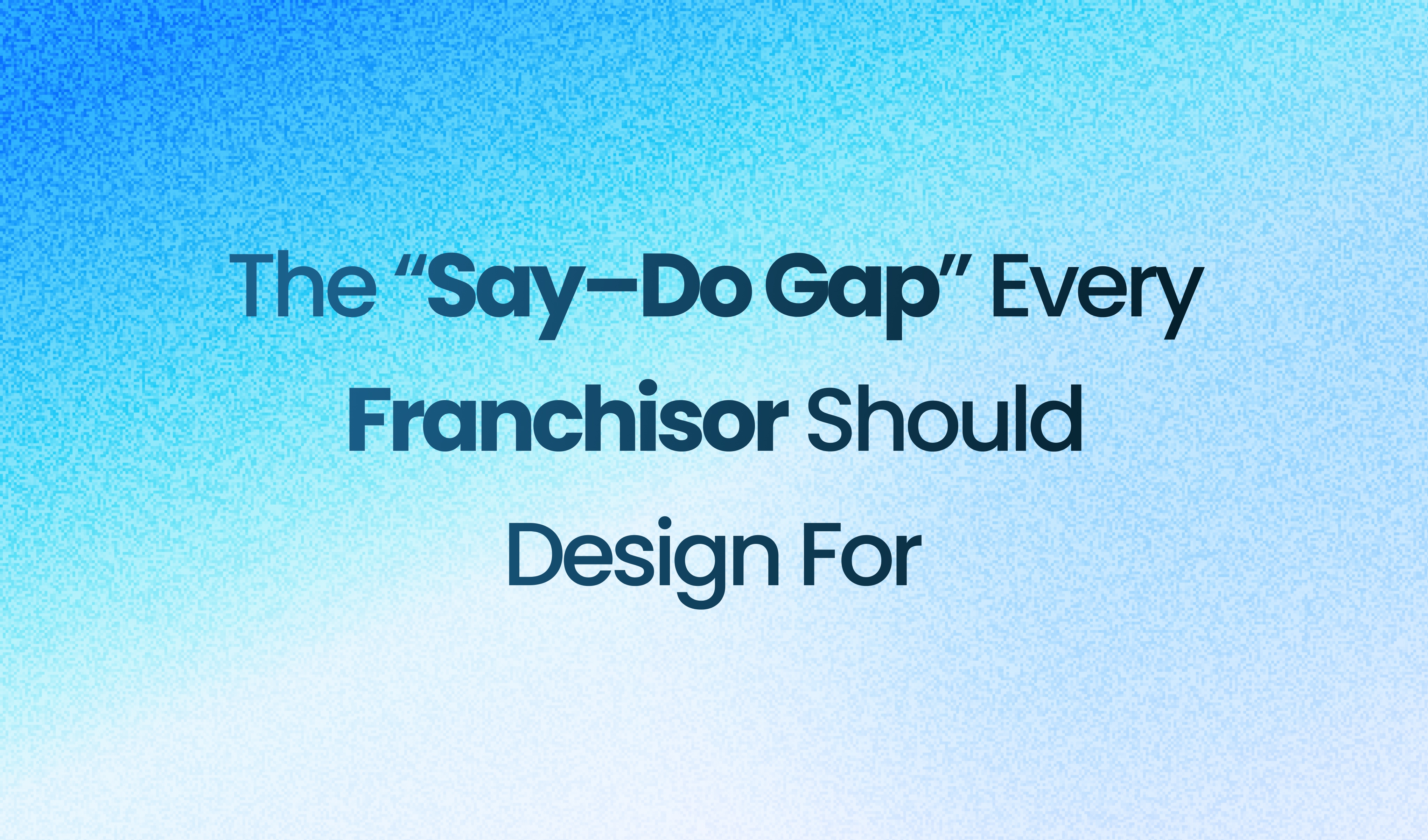
MIN READ -
October 10, 2025
Integrated Solutions Manager
Most franchise buyers don’t buy what they say they want. In surveys, they ask for home-based, low-overhead models — yet when faced with stronger returns, they choose brick-and-mortar. In 2024, those deals rose from 7.9% to 30%, a 300% jump. This “Say–Do” disconnect matters because sales teams waste time filtering out qualified buyers based on stated preferences instead of real decision drivers. It’s not dishonesty; it’s human nature. Buyers want freedom but also need confidence their investment will perform. When the numbers prove stability and growth, logic overrides convenience. The cost of ignoring this gap is lost momentum, misaligned pitches, and slower deal cycles. Stop leading with business format — lead with financial outcomes and show how the model delivers security, ROI, and control.
You can’t close the Say–Do Gap by arguing with it — you have to design for it. Buyers will always say they want one thing and buy another when the economics make more sense. The best sales teams expect this and build their process around it. Instead of trying to convince a buyer that their first preference is wrong, they use data, validation calls, and ROI stories to help the buyer reframe what “freedom” or “flexibility” really means. When buyers see that a well-run brick-and-mortar business can buy them more time and income than a home-based one, the decision shifts naturally. Designing for the gap means your funnel anticipates this pivot and guides buyers through it confidently. Train your advisors to sell outcomes — income, lifestyle, equity — not business types or formats.
The numbers make the Say–Do Gap impossible to ignore. In 2024, brick-and-mortar deals grew from 7.9% to 30% — a 300% jump — even though most buyers said they preferred home-based models. That’s not random; it’s behavior at scale. Buyers follow proof of performance, not preference checkboxes. They want stability, cash flow, and validation from existing owners. When the data and stories show a model delivers predictable returns, buyers adjust fast. Ignoring these patterns means you’re selling to what people say instead of how they actually decide. Every conversation, deck, and follow-up should reflect what the data proves: performance wins. Use the numbers to help buyers reframe what freedom really looks like. Action: update your discovery materials to start with hard metrics — ROI timelines, payback periods, and owner success rates — before talking about format or lifestyle.
Selling through the Say–Do Gap means guiding buyers past what they say they want to what they’ll actually buy once they see the upside. Don’t challenge their preferences — reframe them. Ask questions that uncover goals (“What outcome are you buying this business to create?”) instead of surface choices (“Do you want home-based or retail?”). Then connect your brand’s performance data to those goals. Show how the economics deliver time freedom, stability, or equity — whatever they value most. Back it up with validation stories from franchisees who made similar pivots. Buyers trust what they can see working, not what they’re told will work. Keep the conversation grounded in facts, proof, and outcomes. Action: retrain your sales process to replace “format-first” talk with ROI, payback, and lifestyle results — every pitch, every slide, every call.
Trainual helps you turn “sell outcomes, not formats” into a repeatable system. Build one source of truth for discovery scripts, ROI-first decks, validation call checklists, and objection handling—then assign by role (advisor, SDR, sales lead). New reps ramp faster with step-by-step lessons, quizzes, and required acknowledgements. Version control keeps messaging tight as data changes. You can track completion and spot gaps (e.g., advisors skipping the “reframe format to outcomes” step) and fix them with targeted refreshers. Centralizing proof assets—owner quotes, payback timelines, unit economics snapshots—makes every call start with evidence, not opinion. Load your Say–Do playbook into Trainual this week—scripts, proof library, and a 30-minute outcome-first module—and require every advisor to pass before taking first calls.

Get started with Trainual today
Q1: Why do buyers change their minds mid-process?
Because emotional comfort drives the search, but logical ROI drives the decision.
Q2: Should we stop asking about format preferences?
No — it’s a diagnostic tool. Just don’t treat early answers as gospel.
Q3: How can franchisors turn the Say–Do Gap into a sales advantage?
By pre-empting the pivot: position physical formats as freedom-enablers, not constraints.
Q4: Does this mean home-based is dead?
Not at all. It’s simply that format follows fit — and financial returns recalibrate what “freedom” looks like.
Q5: How can advisors communicate this without sounding pushy?
Use data-driven empathy: “Our report shows 3 in 10 people who said home-based ended up thriving in retail. Let’s explore why.”